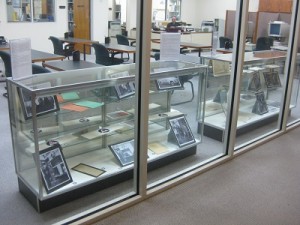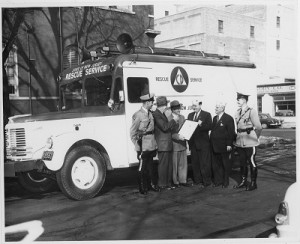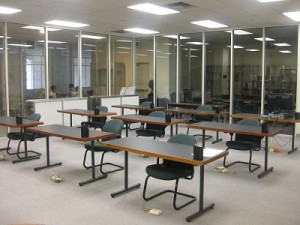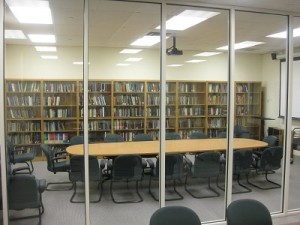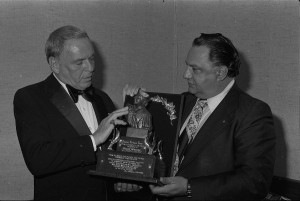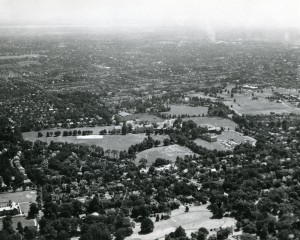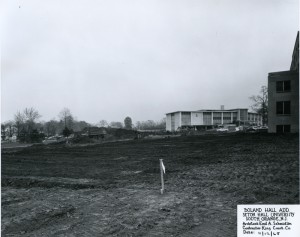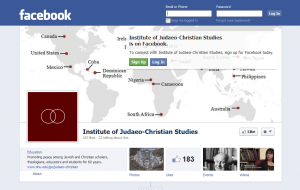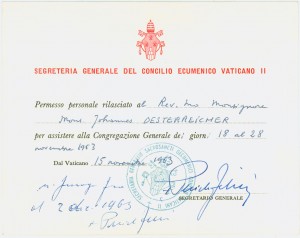
50 years after the Second Vatican Council, scholars, clergy, and Catholics all over the world are still considering the impact of one of the major Church events of the last century. For those with an interest in religious studies or Church history, this is an important time of discussion, analysis, sharing, and review.
The Department of Catholic Studies has put together the event “Commemorating the 50th Anniversary of the Second Vatican Council: Celebrating the Decree on Ecumenism,” taking place tomorrow, November 21 2013. This afternoon event will feature speakers and a panel discussion on Unitatis redintegratio, the Council’s document on ecumenism. The full program linked above lists the speakers, topics, and timeline, and the main portion of the event will take place from 2:00 p.m. – 5:00 p.m in the Chancellor’s Suite.
The Archives and Special Collections Center is participating in this special event with a display of collection materials related to the Council. Including materials from the John M. Oesterreicher papers, the George Shea papers, the Martin W. Stanton papers, the Walter W. Curtis papers, and the Mrs. Frank Whitrock scrapbooks, this selection highlights the involvement of some of those from the Archdiocese of Newark who participated in the Council, as well as how those at home saw it unfold. This display shows photographs, Council documents, writings, pamphlets, newsclippings, and invitations from these five collections and is just a small sample of related materials held at the A&SCC. More information can be found in the flyer put together by the Department of Catholic Studies. For more information on research materials related to the Second Vatican Council held by the A&SCC, consult our LibGuide page on Vatican 2 collections.
The A&SCC wishes to thank Dr. Ines Murzako and the entire Department of Catholic Studies as well as Dr. John Buschman, Dean of University Libraries, for inclusion in this event.

